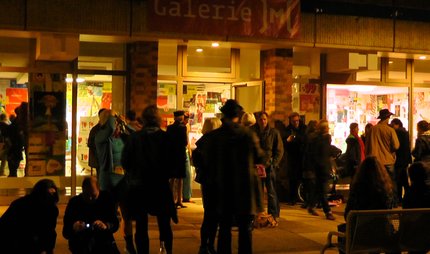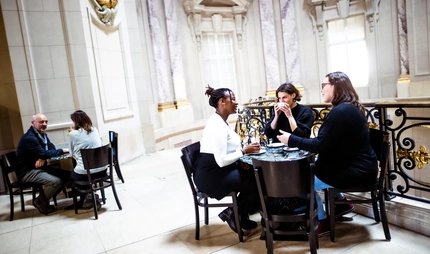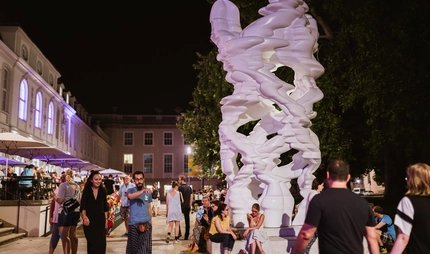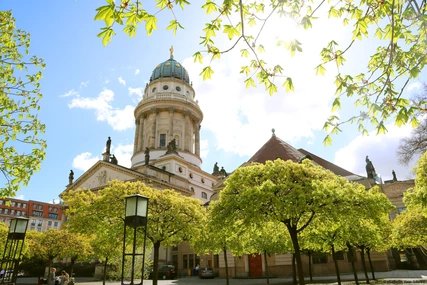
With more than 200 museums , Berlin is at the forefront of Germany when it comes to large and small exhibition centres. There are also unique memorials, monuments and sculptures. The variety of exhibits, themes and concepts is correspondingly large. It's fantastic that there is a wide range of free admission!
By the way, we have compiled special information on free admission to museums and attractions for children and young people especially for you.
Tip 1: Visit museums with free admission in Berlin
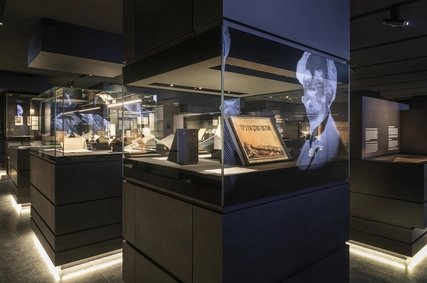
There are actually an astonishing number of museums in Berlin that offer free admission for all visitors. These include very different places such as the German Cathedral on Gendarmenmarkt with its exhibition on the history of German democracy or the PalaisPopulaire on Bebelplatz, which has made a name for itself as a hotspot of contemporary culture.
The Jewish Museum in Kreuzberg welcomes the whole family: adults in the free permanent exhibition, children in the spectacular ANOHA children's world.
The Stabi Kulturwerk awaits you on Unter den Linden. It is the ultra-modern museum of the Berlin State Library, which displays around 300 priceless objects from 600 years of library history - from the Gutenberg Bible to the original score of J.S. Bach's Mass in B minor and a large terrestrial globe from 1826.
More museums without admission
Tip 2: Discover historical sites that are accessible free of charge

Berlin is the authentic place where world history was written several times in the 20th century. You can relive it in a moving way in many places:
In the heart of Berlin is a large, very moving documentation centre that deals with the great crimes committed under National Socialist rule : the Topography of Terror. The exhibition in the House of the Wannsee Conference documents the planning and execution of the Nazi genocide of Jews at the historical site. At the Berlin-Karlshorst Museum , you can learn many unknown facts about the German campaign of extermination against the Soviet Union, which came to an end with the surrender of the Third Reich signed in Berlin-Karlshorst.
In the Allied Museum, a former cinema for American soldiers in Zehlendorf, you can find out about the role of the Western Allies and the everyday life of the soldiers and their families in West Berlin. The exhibition at Tränenpalast at Friedrichstraße station takes you back to the time of the division of Berlin. Here you can find out how catastrophic it was for people and their families on both sides of the Wall when travelling between East and West was made difficult or even impossible. You can find more information about the large free memorials in Berlin in tip 4 below.
If you would like to immerse yourself in both the past and present of Berlin and are interested in the topic of "flight" and "migration", visit the Documentation Centre Flight, Expulsion, Reconciliation at Anhalter Bahnhof, which offers guided tours and workshops as well as a library with an archive of contemporary witnesses and a room of silence.
By the way: The history museums in the individual districts are also mostly free of charge.
Tip 3: Explore special exhibition centres with free admission
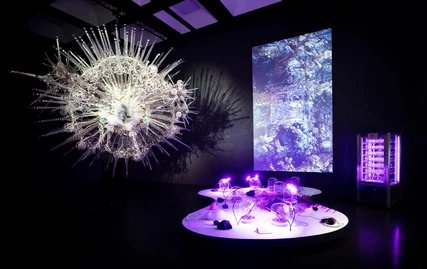
The Humboldt Laboratory of the Humboldt University of Berlin in the Humboldt Forum opposite Museum Island presents exciting temporary exhibitions that use various current topics to show you how important research and science are and what they achieve. The current exhibition "On Water. WaterKnowledge in Berlin" shows you all aspects of this vital element - how much it means life, but also how destructive it can be.
The large Futurium is located in the immediate vicinity of the main railway station. It poses the fundamental question: "How do we want to live?" and inspires you to shape the future of our planet and develop visions of the future in your thoughts, interactively and using exciting objects.
Tip 4: Get to know Berlin's memorials and monuments
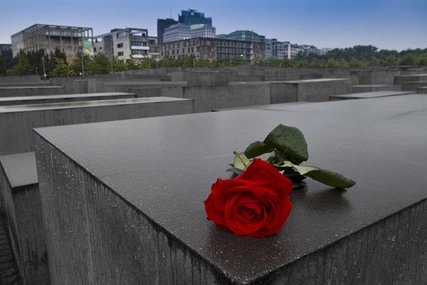
Berlin has experienced an incredible amount in its history - and is known worldwide as a result. There is something very special and incomparable about the German capital: the equally open and sensitive approach to the past throughout the city! This ranges from the often lovingly decorated stumbling stones in the neighbourhoods to huge memorials placed in the heart of the city, such as the more than 2,000 stelae of the walk-in Memorial to the Murdered Jews of Europe near the Brandenburg Gate. A few steps away you will also find the memorial to the Roma and Sinti murdered under National Socialism and the memorial to the homosexuals persecuted during the Nazi era. Touching on Bebelplatz: the memorial to the burning of books. The Nazi Forced Labour Documentation Centre is an exhibition at an authentic location that gives you a deep insight into a sensitive topic of National Socialism .
The period of Berlin's division is also reflected in the many memorials and monuments that are accessible free of charge:
Today, the Berlin Wall Memorial is located directly on the former border strip with a 70 metre long, original section of the Berlin Wall and watchtower. A visitor centre there gives you an insight into the dramatic moments that took place here. The longest preserved section of the Berlin Wall and probably the largest open-air gallery in the world is the world-famous East Side Gallery with paintings by 118 artists from 21 countries, who began painting the East Side Gallery immediately after the fall of the Wall in 1989.
Tip 5: Discover street art and house-high murals
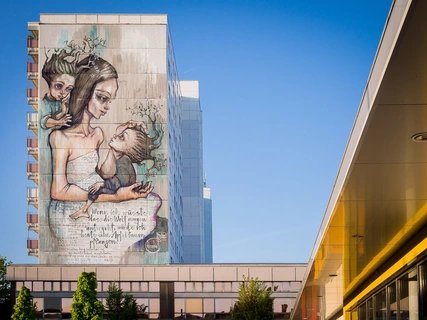
What looks particularly new, cool and fresh is in fact often - throughout history - simply versatile and sometimes thousands of years old. Street art is a very good example of this, with its roots going back to cave paintings and millennia-old symbols on the walls of Roman catacombs. The modern art form of street art has also found a real home in Berlin and has conquered the city facades as its stage. Take a look here: In our free ABOUT Berlin app you will find great curated tours to many street art highlights in Berlin.

There is a lot to tell | ABOUT BERLIN
Tip 6: Stroll through Berlin's gallery district
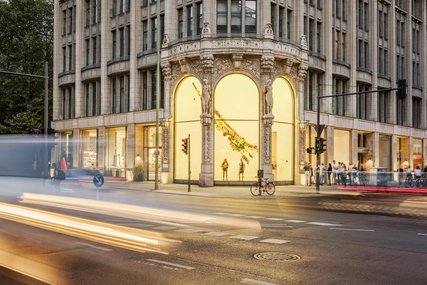
Berlin's art scene is so complex and diverse that it's hard to keep up to date. You can get a very good orientation if you set off on a discovery tour through Berlin's galleries. From the latest contemporary art to antique artefacts from all over the world - Berlin's galleries invite you to explore, look and often engage in an exciting exchange. You will find them mainly in Auguststraße in Mitte, in City West, on Potsdamer Straße and in Wedding.
Tip 7: Jog through the city, past the most important sights

If you want to explore the whole city as a huge open-air museum, Berlin offers unique opportunities to do so practically everywhere. So simply lace up your running shoes and jog your way through the city. Colourfully painted facades, well-known and hidden sights and beautiful or bizarre places can be discovered everywhere. Free of charge, completely self-determined and healthy to boot - whether you runin the Tiergarten and take a closer look at the famous Victory Column, for example, or jog through the government district.
In our Berlin Unboxed podcast episode on the Reichstag and the transparency of German democracy, we take you on an art walk through the government district. Kristina Volke, curator of the art collection of the German Bundestag, shows us exciting works of art that are open to the public and explains the role that art plays in communicating democratic values.
Tip 8: Take a sculpture walk in Berlin

It's a well-known saying in Berlin that you can go out "until dawn" . The saying refers to the sculptures that are publicly displayed all over Berlin. More precisely, to those in the Tiergarten at the gates of the city at the time, which were often mockingly referred to as "the dolls". Anyone who was out and about there at the gates of the city in those days really was travelling a little longer. Today, there are historical and modern sculptures all over the city , but they are definitely worth a visit- day or night.
Tip 9: Immerse yourself in the art and culture scene of Berlin's neighbourhoods

Berlin's district museums often offer you an exciting insight into the history of the city as well as the historical and contemporary art and culture of Berlin. The spaces are often more than just exhibition venues; they are open creative spaces that invite people to exchange ideas. For example, discuss the current question of the extent to which streets and squares should be renamed and take a look at the cross-district exhibition project.
District museums - rename them?!
Berlin's municipal galleries give you a wonderful overview of Berlin's independent art scene. A great current exhibition is running until 25 January at Galerie Pankow: Golden Notebooks. Women in Art and Art History.
With our last tips you can really save on admission:
Tip 10: Free admission to 30 museums with the Museum Pass
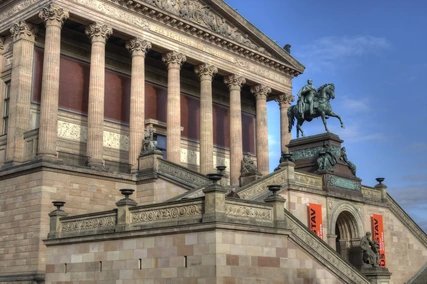
Ingenious for all art lovers: the Berlin Museum Pass. With the pass in your pocket, Berlin's major museums are open to you. You can visit more than 30 museums and exhibitions at no extra cost. Including the museums on the legendary Museum Island. Simply book a free time slot on the website of the respective museum - and you're ready to go.
Tip 11: Save at many museums with the Berlin WelcomeCard

The Berlin WelcomeCard is a great way to save money on your visit to Berlin, as it gives you discounts on admission to a number of exciting places worth seeing. For example, you save a whole 40 per cent if you want to visit the famous Berlinische Galerie, Berlin's museum of modern and contemporary art . there is a 25 per cent discount at the C/O Berlin photography exhibition centre. With the Berlin WelcomeCard all inclusive, you even have completely free admission to many places such as the DDR Museum.

